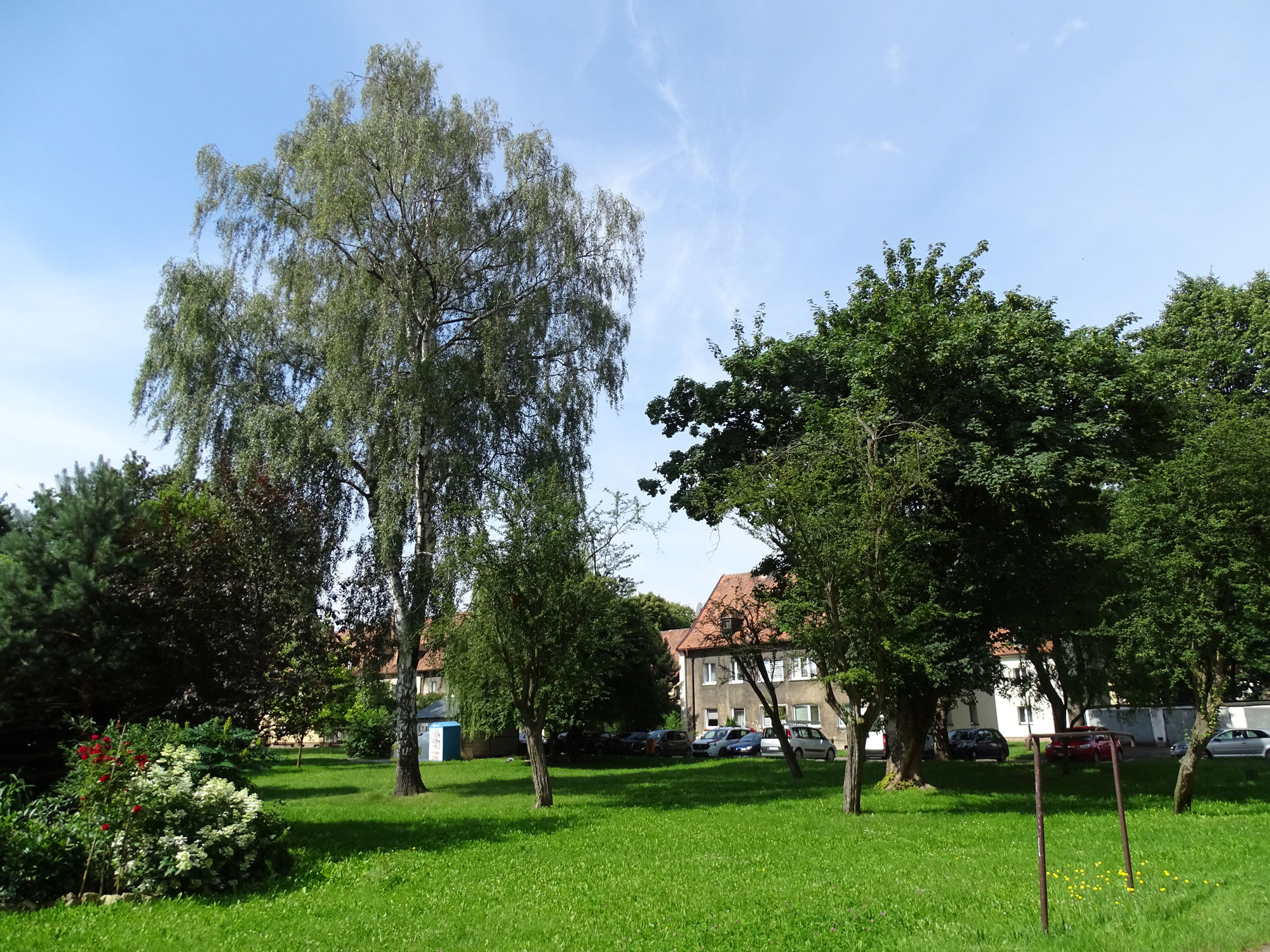[vc_row][vc_column][vc_column_text]The aim of the research was to answer the question of whether, apart from the blocks built in town by IG Farben during WWII, there are any trees left from the time the Germans were here.
In accordance with the plans of the occupying forces, Auschwitz was to become a model German town full of trees and providing the colonialists with a comfortable life.
During WWII, IG Farben built residential blocks for their workers in the then Auschwitz. Today, these single and two-storey buildings can be found among the streets Olszewskiego, Zawidzkiego, Łukasiewicza, Wróblewskiego, Skłodowskiej-Curie.
Green yards
A characteristic trait of this neighbourhood is its huge yards. Each is ca. one hectare large and is covered in greenery. Two questions were raised in the Remembrance Museum of the Land of Oświęcim Residents: are there any trees still growing today that were planted by the Germans in their creation of the town’s gardens? And the second, is there a method to find out their age?
To the Remembrance Museum’s aid came the science of dendrology and Michał Jarosz, inspector and supervisor of greenery work, who undertook the challenge to determine the age of the trees in question. All the work undertaken at the end of June was in consultation and agreement with the town’s institutions who were looking forward to the results of the research.
Five trees to check
As part of the research, the expert first identified species of trees with a circumference of more than 200cm and a height of 130cm. He then chose five. They were Tilia Cordata (littleleaf linden), Acer Platonaides (emerald queen maple), Acer Pseudoplantanus (sycamore), Fraxinus Exelsior (European/common ash), Betula Pendula (silver birch).
“The most precise method to determine the age of a tree is to count the growth rings from the trunk of a felled tree. In the case of trees which we want to keep, we do not, of course, use this method. We must count the growth rings of a tree which is still standing,” explains Michał Jarosz in a report for the Remembrance Museum.
In order to do so, a sample had to be taken from each tree being researched, thanks to which the age can be determined.
Three are almost certain…
Analysis of the results showed that three of the five trees researched are highly likely to have been planted by the Germans at the beginning of the 1940s. They are the littleleaf linden, emerald green maple and common ash.
Because there are dozens of trees with trunks of more than 200cm in each of the yards, it would seem that there are many more green reminders of the town planned by the Germans still growing today.[/vc_column_text][vc_empty_space][thb_image caption=”true” image=”2044″]The huge yards in the former German part of the Chemików neighbourbood are full of greenery.[/thb_image][/vc_column][/vc_row]






